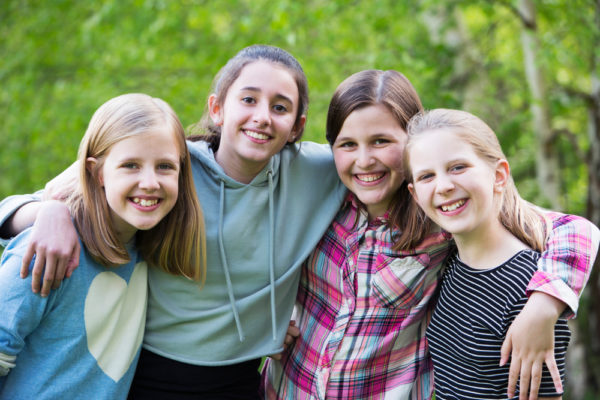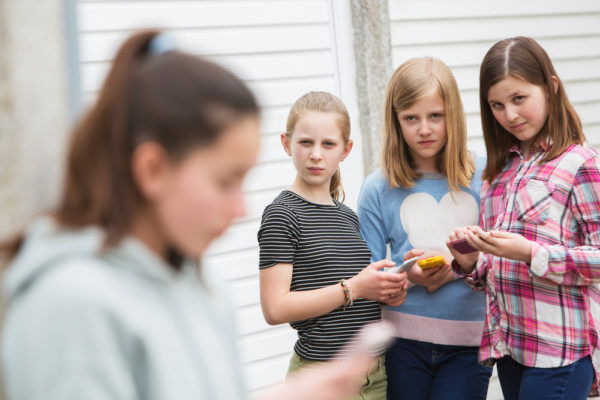It’s not uncommon for girls (or kids, for that matter) of any age to quarrel. But cliques, bullying and mean girl behaviors can be detrimental to your troop.
So how can you address this once it’s happening? Or even better – prevent it from becoming an issue?
As the troop leader, you’re key to creating a safe and inclusive environment.
Have the Group Set Their Own Rules
It’s never too early or too late to have a conversation with your group about how they want to be treating each other and draft up a set of group rules. The Girl Scouts* call this a Troop Agreement.
By creating a set of standards, like the Golden Rule (“Treat others as you’d like to be treated”), you can establish clear expectations that come from the youth, themselves.
Many groups like to decorate this as a poster and have the group sign it together, and then display it at each meeting.
And if behaviors start falling out of line, the Troup Agreement serves as a great tool for addressing them, either with the individual/s or…
Address the Behaviors as a Group
Start the conversation with open-ended questions:
- How have we been treating each other lately?
- Are we living up to our Troop Agreement?
- How can we still be kind when we disagree?
Your job isn’t to lecture. It’s to invite the group to higher self-awareness and great emotional intelligence about the impact it’s having on others.

Teach Kindness and Conflict Resolution
Respect, inclusion and empathy shouldn’t only be addressed when bullying occurs. And by building these concepts into your program, you’ll boost your youth’s social-emotional skills.
Help the girls in your troop learn about empathy by completing the Accessibility Patch Program® from Youth Squad®.
Have youth practice talking through their differences and give direct feedback using “I” statements.
Address Gateway Behaviors
Researchers have identified small signals that often come before bullying. These are things like:
- Eye rolling
- Physical exclusion (turning one’s back to keep someone on the outside)
- Snide remarks or pointed comments
By addressing these smaller behaviors early using one-on-one feedback, you’re more likely to stop bullying from becoming the norm.
Reward Positive Behavior
One of the easiest ways to influence a group’s behavior is by calling attention to the kids who are doing the action you want. “Thanks, Vivi, for making room on the couch for Desi!”
By “catching them being good,” you increase the likelihood of that inclusive behavior happening again and again.
Notify Parents of Youth Involved in Bullying
For bullying behaviors, connect with parents of both the youth bullying and youth being bullied. Explain what occurred, address their concerns, and let them know what the next steps will be.
Build Common Bonds
Shared experiences will help your girls feel more like friends. Make sure to promote troop participation in feel-good activities. Volunteering at your local pet shelter is a great option. Animals often bring out the best in everyone.
By acting thoughtfully and proactively, you can foster a culture of inclusiveness while helping your youth gain the social skills they’ll need from adolescence into adulthood.
After the mean girl behaviors have been resolved, your girls can help advocate for bully prevention in their community. The Wellbeing Advocate Patch Program® and Wellbeing Delegate Service Program from Youth Squad® both include information, resources and suggestions for a meaningful anti-bullying service project.
*youthsquad.makingfriends.com and MakingFriends®.com are not affiliated with, endorsed by or a licensee of Girl Scouts of the USA.




